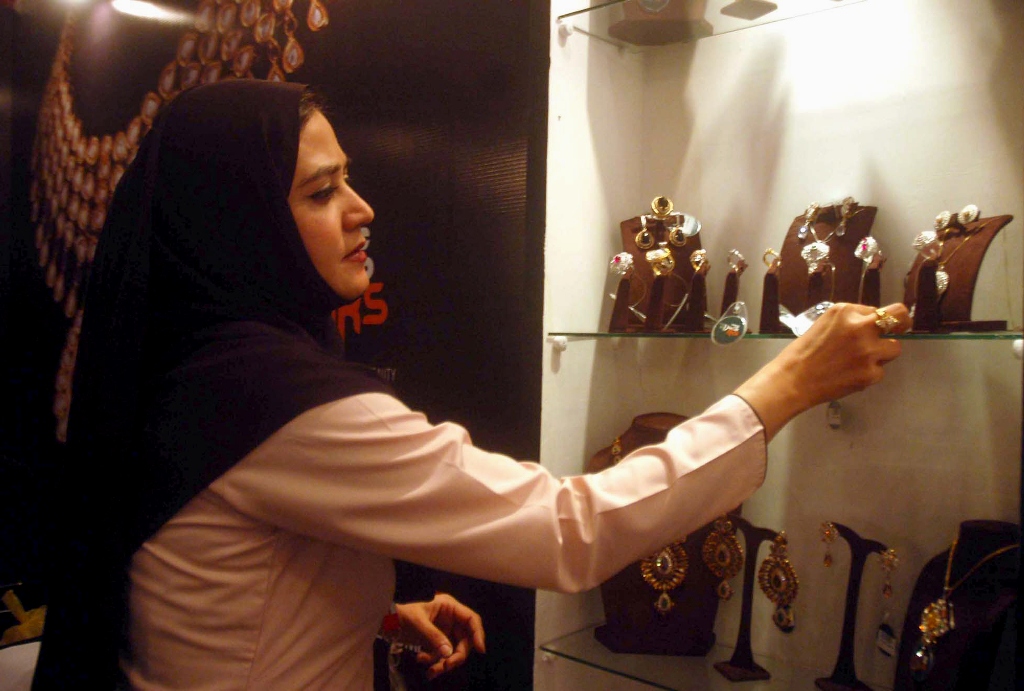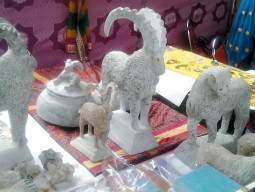
KARACHI:
Pakistan is one of the few countries in the world that holds abundant resources of precious and semi-precious stones. Now that exports of gems and jewellery have crossed the billion dollar mark, stakeholders expect some government interest in a sector which has so far failed to achieve any significant support from successive governments.
Small traders, dealers and artisans are unanimous in saying that unless the government provides financing opportunities to budding entrepreneurs, the industry’s exports will not show strong growth going ahead.
Combined gems and jewellery exports hit the significant $1.1 billion mark in the first nine months of the current fiscal year, up 91% from $580 million in the same period last year. The sector has registered impressive growth, but gem exports are still too low if compared to jewellery exports, especially if seen in the context of the inherent potential in the segment. Gems exports alone account for just $3.1 million of export earnings, even after an impressive 19% growth in the last nine months, if compared to the same period last year.

“Gems exports are indeed too low, but one of the biggest reasons behind that is that, in Pakistan, gems used in exportable studded jewellery are not counted in the export of gems,” Pakistan Gems and Jewellery Development Company (PGJDC) Chief Executive Bakhtiar Khan told The Express Tribune in a recent interview.
“Pakistan has some of the best precious and semi-precious stones, which give us the raw material for studded jewellery – one of the various kinds of jewellery where Pakistan performs well in the international market,” Khan explained.
However, despite these encouraging factors, the public and private sectors are convinced that the overall situation is not at all satisfactory.
“Gems and jewellery is a relatively smaller sector that has no representation in policymaking circles, because of which no one cares,” a Trade Development Authority of Pakistan (TDAP) official told The Express Tribune. Within the sector, the gems segment is unorganised and still uses traditional methods in the mining and finishing of stones. On top of these problems, the sector does not employ a powerful lobby to back it up and gain concessions from the government, like the textiles and other sectors, the TDAP official added.
Iftikhar Hussain, general manager of Khushal International, a growing company based in Gilgit-Baltistan, told The Express Tribune that the gems sector in Gilgit-Baltistan has all the potential to become the biggest industry in the rugged mountainous regions of the north.
“I have provided stone cutting and polishing machines to many women who work for me from their homes in Gilgit-Baltistan, but I do not have the money to buy more,” said Hussain.
The sector can be developed into a full-fledged cottage industry, but lack of financing opportunity is the biggest hurdle in the growth of the gems industry in Gilgit-Baltistan. Locals are disappointed with the concerned government authorities because of the lack of any significant development in the gems sector, he added.
Pakistan has also not been able to create an enabling environment for the gems and jewellery industry in Balochistan – a resource-rich province marred by insurgency, ethnic conflicts and sectarian violence for decades.
Mohammad Ibrahim Langou, proprietor of Baluchistan Gems and Jewellery and Handicraft, said that miners and traders in Balochistan know of huge reserves of undiscovered blue granite and other stones that are in high demand in international markets, but do not have access to needed resources for mining purposes.
Most traders sell precious and semi-precious stones in Peshawar at negligible prices to intermediaries, who sell them in international markets and earn hefty profits, said Langou, who frequently travels between Quetta and Peshawar – arguably the biggest markets for gems in the country.
Published in The Express Tribune, May 15th, 2013.
Like Business on Facebook to stay informed and join in the conversation.
COMMENTS (3)
Comments are moderated and generally will be posted if they are on-topic and not abusive.
For more information, please see our Comments FAQ


































































As of now none of the gem mininig operation,in Pakistan, is comercially viable. The quantity and quality of available precious gems is absymly low and the miners demand astronomical prices for them. Due to lack of product knowledge and the belief that anything out of a mountain is expensive, our miners have ridiculous price demands. We hardly have any functional lapidary running in the whole country and even if one set up a lapidary not enough stones are available to make it a profitable venture. The only way is to import stones from outside of Pakistan as minning is much easier in Africa and Australia. The mining operations in Pakistan commence from April and end in somewhere September. Due to heavy snow minning is impossible in the northern areas in winter months. The miners , in a group of 10-12 people, go around with out dated methods to extract stones which usually results in damaging the stones. Hence , reducing the market value of stones. Compared to this, in Africa minning is operational year round as they are digging in deserts not high mountains. The price of African gems is very low compared to Pakistani gems. It makes more sense for me to travel to Bangkok and buy African gems than buy stones from here.
If one head to Chantraburi, Thailand , one will find far better quality and cheaper prices for the gems. If one head to Namak Mandi, be ready to lose your pants. All the talk about lifting the gem sector and creating jobs is smoke screen. I have dealt with departmental politics and insulting attitude of the government officials who are no different than any one government department.
Misleading headline. Support is sought for the gems sector specifically where the exports are restricted to 3.1 million and are not the billion that the headline talks about.
I hope the dependency culture is not exported to this sector, despite their wish for importing it.